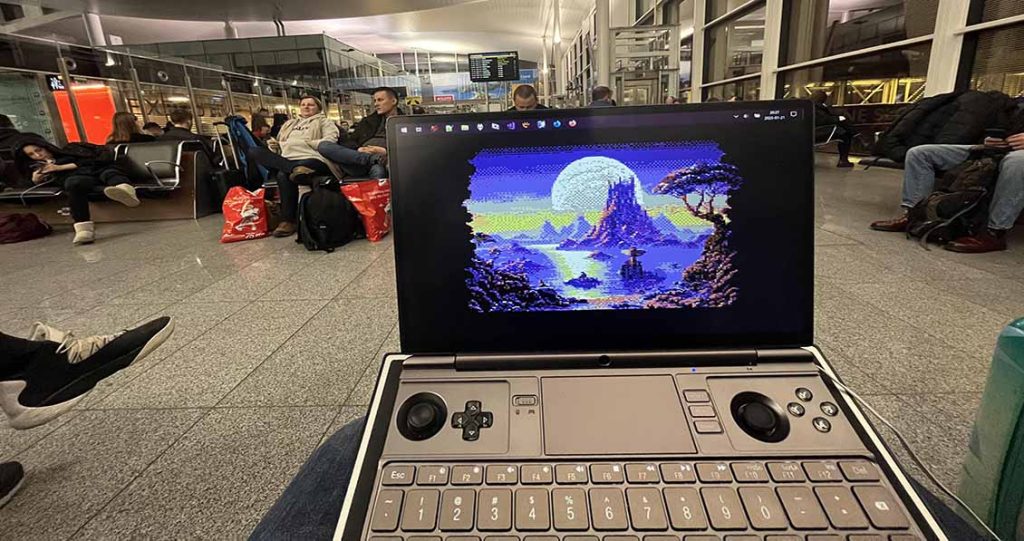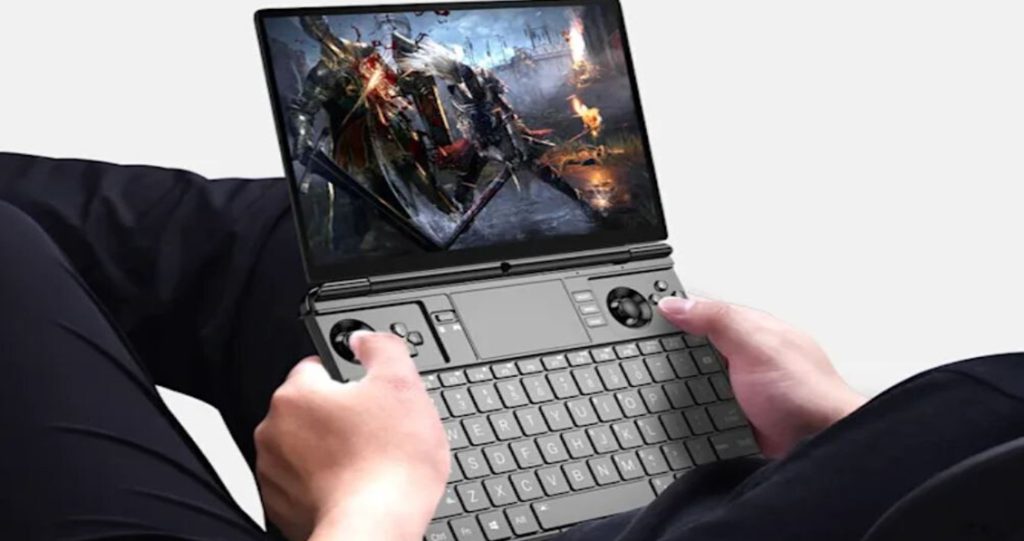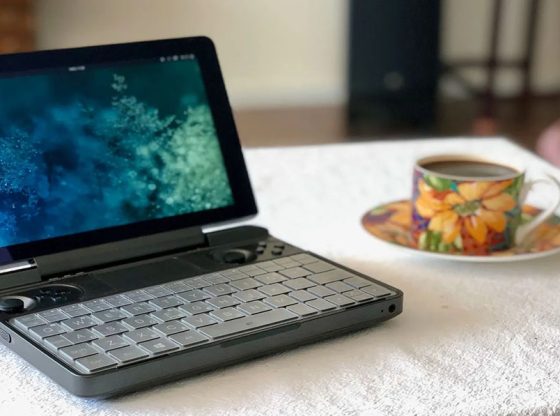I didn’t think I’d ever call a 10-inch laptop my primary productivity device. I didn’t expect to fall in love with a machine that has hidden joysticks under a hinged panel. And I certainly didn’t think I’d spend hours gaming on a machine that vibrated so hard in my hands it made my fingers tingle. But after spending several weeks with the GPD Win Max 2, I’ve come to an odd conclusion: this is one of the most fascinating little computers I’ve ever used. It’s part laptop, part gaming handheld, part cyberpunk hacker deck—and it nearly nails all three roles.
But it’s not without compromise. In fact, it’s full of them. Let me take you through the full experience.
First Impressions: Not Your Average Mini-Laptop
The moment I unboxed the GPD Win Max 2, I knew this wasn’t an ordinary notebook. Its thick, rugged design reminded me of a Swiss Army knife—dense, multifunctional, and unapologetically geeky. GPD doesn’t seem to be chasing the MacBook Air or Dell XPS crowd. Instead, they’re courting tinkerers, gamers, power users, and enthusiasts who’ve dreamed of having a pocket cyberdeck since they read Neuromancer or played Deus Ex.
It feels almost like a prop from a futuristic sci-fi movie: full-sized ports scattered across its edges, a thick hinge that feels mechanical rather than minimalist, and a screen that opens to reveal… game controls? Yes, hidden beneath a pair of magnetic flaps are full dual analog sticks, a D-pad, ABXY buttons, and even shoulder triggers. It’s a gaming handheld in disguise.
And yet, unlike most handhelds, it runs full Windows 11. This isn’t some ARM-based approximation or SteamOS variant. This is a full-fledged PC, and it runs Adobe Premiere, Photoshop, Steam, and even OBS Studio. But it also plays Elden Ring, Cyberpunk 2077, and Returnal—though not always comfortably.
The Keyboard Is the Real Star
For a device this small, you’d expect the keyboard to be compromised. I was bracing myself for something mushy or cramped, but GPD surprised me. The keyboard is phenomenal—especially for a 10.1″ device. The key travel is deep enough to be satisfying, the spacing is tight but manageable, and it’s just plain comfortable to type on. I wrote several articles, drafted newsletters, and composed far too many tweets using this machine, and not once did I feel like I needed to reach for my full-sized laptop.
It’s not backlit, which is a shame, and there are some quirks with the function row, but overall? I would take this keyboard over many larger ultraportables.

Performance: Surprisingly Capable, With Caveats
Under the hood, my unit came with the AMD Ryzen 7 8840U processor, 32GB of RAM, and a 2TB SSD. It also supports up to 64GB of RAM and dual SSDs, which is nearly unheard of in devices this size.
For daily productivity, it handled everything I threw at it—web browsing, video editing, Zoom calls (more on that disaster later), and document processing. It also surprised me with how competent it was for light gaming on the go. At 720p and low-to-medium settings, games like Tomb Raider, Assassin’s Creed Valhalla, and Cyberpunk 2077 ran above 60fps when plugged in.
The real gem here, though, is the Oculink port. I connected an external GPU (an RTX 4090, for fun) and suddenly had a desktop-class gaming rig running on a 10-inch laptop. It’s not plug-and-play—you have to fully power down before connecting or disconnecting—but it worked. If you’re dreaming of a pocket powerhouse that can dock and become a 4K gaming machine, the Win Max 2 delivers.
But Oh, That Battery Life
Here’s the rub: all that power takes its toll. On battery, the Win Max 2 isn’t going to win any endurance awards. Light use (web browsing, document editing, YouTube) gives me about 5-6 hours. Gaming drains it fast. Balatro, a low-power poker roguelike, got me just over five hours. More demanding games like Armored Core 6 pulled the battery down in under two.
This is a machine that demands a charger nearby. If you’re thinking of using this as your primary travel laptop, pack your power brick—and maybe a second battery pack. I found myself reaching for my Anker 737 GaN charger constantly.
The Gaming Experience: Powerful But Not Always Comfortable
When I first flipped up the controller flaps and gripped the device like a handheld console, I thought, “Okay, this is going to be fun.” And it was—for about an hour. Then the fatigue set in.
This thing weighs over 2 pounds (around 1kg), and unlike a Steam Deck or Switch, it doesn’t have ergonomic grips. You’re holding a flat, metal-edged rectangle with fans humming just under your fingertips. The vibration isn’t feedback—it’s real physical vibration from the fans and hardware. It’s distracting. At times, it’s even uncomfortable.
Still, the controls are good. The sticks feel similar to those on the Switch Pro controller, thanks to their Hall Effect sensors, which reduce drift. The D-pad is tactile, clicky, and responsive, and the face buttons feel solid. The triggers are shallow but usable, and the shoulder buttons have a satisfying click. If GPD added some rubberized grips and a better heat isolation layer, this could be a serious Steam Deck competitor.
The Display Is… Fine
On paper, the 2560×1600 display sounds like a win. It’s an IPS panel with decent brightness, good color accuracy, and a tough Gorilla Glass 5 coating. Watching Netflix or editing photos? It’s solid.
But for gaming? That fixed 60Hz refresh rate is a buzzkill. Once you’ve played games at 90Hz or 120Hz on the ROG Ally X or Steam Deck OLED, going back to 60Hz feels rough. There’s also the issue of scaling—at 10.1″, that resolution makes text tiny, forcing me to bump up UI scaling in Windows to 150% or more.
Webcam and Audio: Where Things Go Bad
I wish I could say the webcam was passable. It’s not. It’s genuinely one of the worst I’ve ever used. Positioned awkwardly on the hinge, it points up your nose and captures a bizarre, unflattering angle. My coworkers joked that I looked like I was trapped in a spider’s lair, my hands looming into the frame every time I typed. And the microphone? Tinny, low-volume, and borderline unusable for video calls.
If you want to use this for Zoom, Teams, or any kind of professional video call, do yourself a favor and buy a good external webcam and mic. I use a Logitech StreamCam and a Rode NT-USB Mini—both worked great with the GPD.
Trackpad Placement: A Missed Opportunity
There’s something truly awkward about reaching up to use a touchpad. On the GPD Win Max 2, the trackpad is situated above the keyboard rather than below it. That design choice alone makes it feel more like a compromise than an intentional ergonomic decision. Sure, it has physical click functionality, and it technically works—but reaching for it interrupts your typing rhythm every time.
It’s also small. Really small. At just 2.7 inches wide and 1.6 inches tall, it’s barely usable for detailed navigation. If you’re planning to do any creative work, graphic design, or long writing sessions, do yourself a favor and carry a Bluetooth or USB-C mouse. Personally, I paired mine with a Logitech MX Anywhere 3S, which fits perfectly into the GPD’s aesthetic and is easy to toss in my bag.
Heat, Noise, and the Sensory Tax
Let’s talk about the one thing no one warns you about: the tactile noise of this machine.
It’s not just that the fans are loud when you push the CPU—it’s that you can feel them. The device has an aluminum-and-resin shell with little insulation, and the result is that vibrations from the internal fans echo into your hands. It’s like holding a miniature lawnmower during a gaming session.
It’s not unbearable, but it becomes tiresome during longer sessions. Especially if you’re resting your wrists near the palm area, where those micro-vibrations buzz like a faint reminder that this machine is really working hard.
The heat is concentrated, but manageable. The keyboard deck never became scorching, even when gaming. But the back side, near the cooling vents, can get uncomfortable to touch after extended use.
Ports Galore—and They All Work
Here’s one of the GPD Win Max 2’s greatest triumphs: connectivity. While ultrabooks are busy killing off every port imaginable, this beast gives you everything short of an Ethernet jack. And it’s all full-sized.
You get:
- Two USB4 ports (40Gbps, good for eGPUs, displays, or Thunderbolt docks)
- Two USB-A 10Gbps ports
- Full-size HDMI 2.1 port
- UHS-II full-size SD card reader
- UHS-I microSD card slot
- 3.5mm headphone jack
- And a rare, 63Gbps Oculink port for serious eGPU connections
And here’s the best part: they’re all usable simultaneously. No weird shared bus bottlenecks, no dongle nonsense. You can connect external displays, SSDs, a DAC, a webcam, a game controller—and still have bandwidth left over. I tried plugging in a CalDigit TS4 dock and an external SSD, while charging and outputting to a 4K monitor, and everything worked flawlessly.
Expandability and Modularity: A Tinkerer’s Paradise
Beneath the baseplate, the Win Max 2 hides another surprise: two M.2 SSD slots, one standard 2280 and one 2230, stacked vertically. Adding storage is easy, no weird ribbon cables or proprietary brackets required. Just unscrew the bottom panel, pop in your drive, and go.
It’s also equipped with two SD card slots—both full-depth, so your cards won’t stick out like tiny plastic tongues. I carry one 1TB microSD for quick file dumps and a 256GB UHS-II SD for transferring video from my Sony Alpha camera.
There’s also a WWAN card slot, which in theory allows you to install a cellular modem. GPD doesn’t support it officially in every model, but the hardware is there. That’s the kind of nerdy inclusion I love.
Where to Buy—and How to Get the Best Deal in the US
If you’re reading this from the States, you’ve got a few options for purchasing the GPD Win Max 2. My go-to places include:
- Amazon.com: Sometimes stocks GPD products, but often with long shipping times or third-party sellers.
- Indiegogo: GPD often launches and sells new units here first. Great for early adopters, but delivery can take time.
- GPD’s Official Store: gpd.hk – Offers international shipping and is often the most reliable for preorders and new configurations.
- B\&H Photo and Newegg: Occasionally carry GPD devices, and often have bundle deals or faster domestic shipping.
- For refurbished or used deals, eBay and Swappa can be good alternatives—but buyer beware, as always.
Before buying, I also recommend checking out:
- Rtings.com for display reviews
- Notebookcheck.net for in-depth thermal and performance benchmarks
- TechBargains.com or Slickdeals.net for occasional discount alerts
Telecommunication Compatibility
If you’re planning to use the Win Max 2 with a mobile data SIM (via external USB dongle or internal modem), make sure you’re choosing a modem that’s FCC certified and compatible with AT\&T, T-Mobile, or Verizon bands.
To check compatibility, use these U.S.-based resources:
- willmyphonework.net
- Your carrier’s BYOD compatibility tool (Verizon’s is especially helpful)
- BestMVNO.com to explore prepaid carriers that offer better data plans for tethered or hotspot-enabled devices

Who This Is For—and Who Should Stay Away
If you’re the kind of person who:
- Edits videos on the go
- Tinkers with hardware and appreciates having access to every port known to man
- Loves the idea of an ultraportable workstation-slash-console
- Has an eGPU at home and wants a single machine to drive it
- Likes playing retro or modern games at 720p
Then this machine might just be your dream.
But if:
- You need all-day battery life
- You prioritize comfort over flexibility
- You want the best webcam and mic experience
- You dislike Windows’ quirks
- You hate fan noise or handheld vibration
Then you’re probably better off with a dedicated gaming handheld like the Steam Deck OLED or ROG Ally X, or a traditional ultraportable like the Lenovo ThinkPad X13 or Dell XPS 13.
An Unpolished Gem I Can’t Help But Love
I have gripes, sure. Plenty of them. I want a better webcam. I want a quieter fan. I want a VRR-capable 90Hz display and a bigger battery. But here’s the thing: I keep coming back to the Win Max 2. I carry it in my bag every day, not because I have to—but because it’s so versatile that I want to.
It’s a powerful writing tool, a solid little editing station, and when I’ve got an hour to kill at the airport? It becomes my Persona 5 machine, my Hades machine, or my Returnal machine.
It’s flawed. It’s heavy. It’s weird. But it’s mine.
And if GPD ever makes a Win Max 3 that fixes the vibration, boosts the screen, and finally includes a half-decent webcam? I’ll be first in line.

